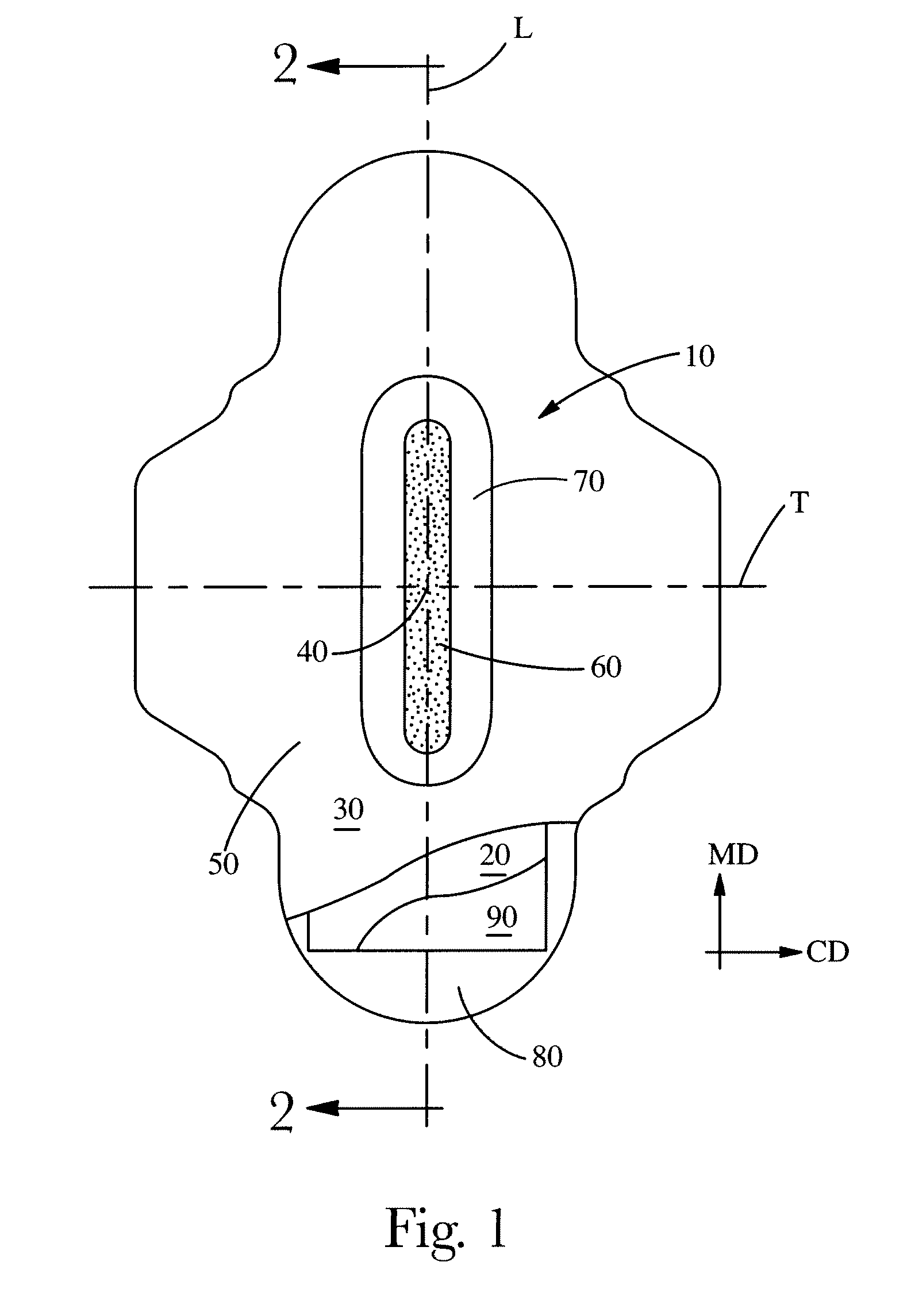Method of producing color change in overlapping layers
a technology of color change and overlapping layers, applied in thermography, paper/cardboard containers, photosensitive materials, etc., can solve the problems of limiting the design space in which designers can create innovative designs, high capital cost of absorbent articles manufactured by high-speed manufacturing lines that include printing capability, and difficulty in registering colored regions disposed on multiple components
- Summary
- Abstract
- Description
- Claims
- Application Information
AI Technical Summary
Benefits of technology
Problems solved by technology
Method used
Image
Examples
example 1
[0108]A feminine hygiene pad is constructed comprising a film topsheet comprising a piezochromic colorant and a secondary topsheet comprising an airlaid material with a spunbond nonwoven carrier layer, wherein the nonwoven carrier layer comprises a photoreactive colorant. During the converting process, the secondary topsheet or sub-assembly of components including the secondary topsheet is exposed to UV light through a patterned screen in order to create a color pattern in a central zone of the secondary topsheet material. The product or sub-assembly is subsequently subjected to a bonding process which induces a color change in the film topsheet material in the pattern of the bond sites. Alternatively, the order of activation of the piezochromic colorant in the film topsheet and the photoreactive colorant in the secondary topsheet during the converting process can be reversed.
example 2
[0109]A tampon comprising a nonwoven overwrap comprising a photoreactive colorant is inserted into a translucent plastic applicator comprising the same photoreactive colorant during the converting process. The tampon / applicator assembly is subsequently exposed to UV light through a patterned mask to create a color zone on both the applicator and the tampon. These color zones are perfectly registered with one another and work together to create and highlight a visual signal to the consumer of enhanced absorbency. Alternately, the overwrap and applicator may be activated separately and then combined.
example 3
[0110]An absorbent article is constructed comprising a nonwoven topsheet and a nonwoven acquisition layer, each comprising the same or different photoreactive colorants. In a single activation step, the article is subjected to UV light, inducing color change in both the topsheet and the acquisition layer materials.
PUM
| Property | Measurement | Unit |
|---|---|---|
| diameters | aaaaa | aaaaa |
| diameters | aaaaa | aaaaa |
| diameters | aaaaa | aaaaa |
Abstract
Description
Claims
Application Information
 Login to View More
Login to View More - R&D
- Intellectual Property
- Life Sciences
- Materials
- Tech Scout
- Unparalleled Data Quality
- Higher Quality Content
- 60% Fewer Hallucinations
Browse by: Latest US Patents, China's latest patents, Technical Efficacy Thesaurus, Application Domain, Technology Topic, Popular Technical Reports.
© 2025 PatSnap. All rights reserved.Legal|Privacy policy|Modern Slavery Act Transparency Statement|Sitemap|About US| Contact US: help@patsnap.com



